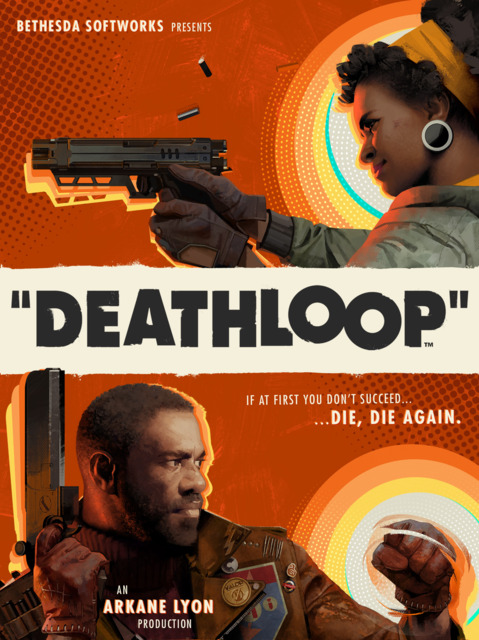Deathloop (PC) Review
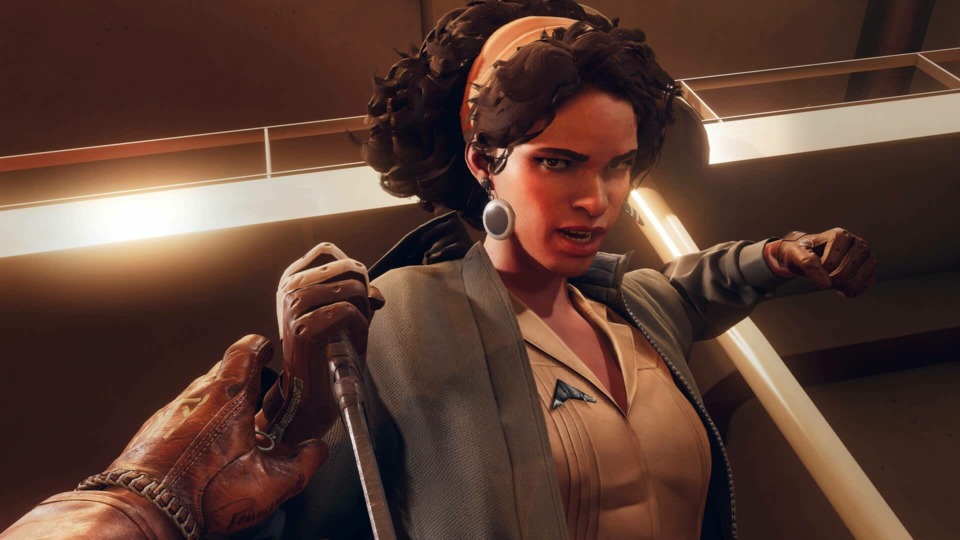
Note: Two paragraphs include spoilers, which I marked with spoiler warnings. Also, my final score is 4.5/5.
Time loops can offer some of the most interesting storytelling and gameplay in video games. Over the past couple of years, a few notable time loop games have released, with some being better than others. Deathloop, the latest game from Arkane, decided to combine their signature immersive sim gameplay with a time loop, as well as adding in a dash of the 60s. Fortunately, the combination works, and what is offered here is both a great time-looping adventure as well as a great jumping-in point for immersive sims.
Taking place in the 1960s, Deathloop follows Colt, a man who is stuck in a time loop on the island of Blackreef. He wants to get out of the loop, but to do so he needs to kill targets known as the Visionaries within the same day. On top of this, a woman named Julianna is aware of Colt’s plan to break the loop and is trying to stop him. From there, Colt attempts to figure out a way to assassinate all targets within the day while also trying to survive against Julianna and hordes of loyal foot soldiers who are out to get him.
It’s easy to compare a video game to other video games as a form of a specific reference point. Going into this title, I was expecting a mix of Outer Wilds and Prey: Mooncrash, but by the time I finished, I found myself also referencing games like Hitman and Dishonored. I think what makes this game shine, however, is that it manages to juggle all of these different components well. While this juggling act does falter in spots, it was also some of the most fun I had with a game this year so far.
Time loop stories have different restrictions and freedoms compared to a linear story, and I think Deathloop works on those freedoms and restrictions well. The story centers around Colt attempting to kill the visionaries in a timely fashion, and to do so he needs to study them. What ensues is an investigative game into what makes each character tick and how to push them around in a way that brings more of them together. Not only that, but each character also controls some aspect of the time loop or the island; so as I’m figuring these characters out, I’m also slowly unraveling the island, and watching the puzzle pieces slowly fall together non-linearly is gripping and shows the strength of what a time loop story can be. Not only that, but the Visionaries themselves are also fun, as their eccentric personalities showed themselves off in the gameplay, documents, group chats, and audio logs I found while playing, and shifting these characters around with my actions revealed even more personality traits and relationships worth seeing.
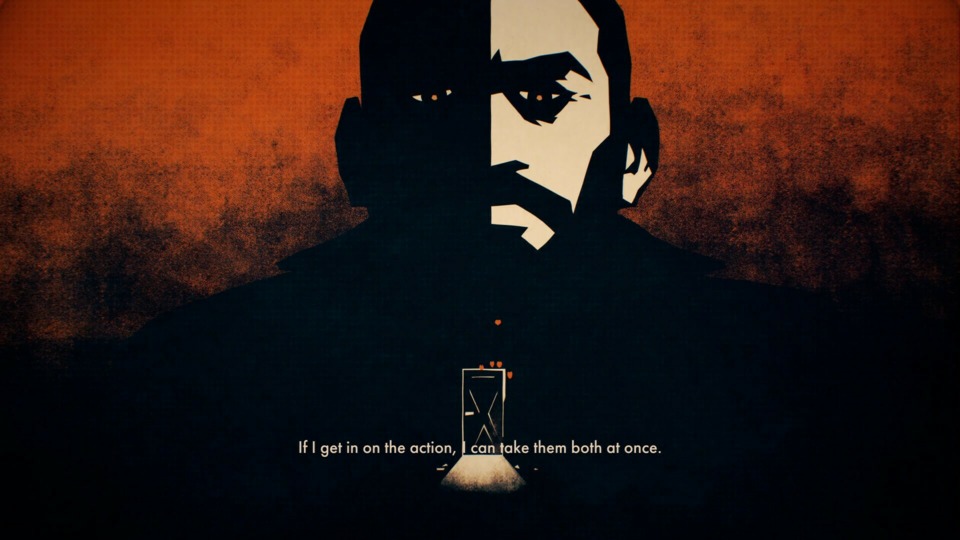
The biggest relationship in the game and where this story truly shines is with Colt and his archrival Julianna. This game is much more lighthearted than Arkane’s previous works, and one place where it shows is between the radio dialogue between these two characters. Hearing them banter and poke fun of each other over just about anything is a lot of fun to listen to, and that plus the solid voice acting fleshes out these characters well. What I found interesting about these characters, especially Colt, is that he doesn’t even know why he’s trying to break the loop as he’s attempting to break it, and listening to Julianna mock him while simultaneously reveal tiny bits about him that she knows but he doesn’t is a very interesting way of revealing the character to the player. The other ways this game slowly reveals Colt is through floating text seen throughout the game (something that Colt himself can also see) as well as seeing other Colts who are all dressed differently and tend to throw ideas back and forth for the few seconds they spend together. Seeing some of the creative ways of character building and storytelling through these two characters lightens the game up, but these two also lead into an issue I had with the story.
[start of spoilers]
As I made my way through the story, I learned a lot about the island, but there were still questions left unanswered for me that I was hoping would be solved with the ending. Unfortunately, that isn’t the case. The game has three possible endings (one of which just restarts the day, so really just two endings) that’s decided then-and-there, and while one of them feels a bit more conclusive than the other, neither of them really fix the issues I had with the conclusion. I knew going into the game that Colt wanted out of the loop and Julianna wanted to stay in it, but I was hoping to figure out why. Well, there isn’t really any great reason other than Colt wanting to leave and Julianna wanting to stay. Sure, you could say this is tackling the themes of the fear of death due to the passage of time, but the way this game handles its ending didn’t do a great job of highlighting it. This also means the big twist in this story isn’t in the ending, but actually about halfway through when Colt finds out his true relationship to Julianna, but finding out that’s the big twist retrospectively isn’t nearly as great as feeling the full force of a twist right when it happens.
That isn’t the only plot hole left open, as there are some other big plot points that I think the story doesn’t do a great job at highlighting. Why are there multiple Colts? Why do the enemies wear masks and disappear when killed? Why does Colt see floating text? While these questions and more are likely explained in some hidden document somewhere, I think these are big-enough plot points to better highlight in the story. The whole document reading thing does lead to a larger issue with the game, but I’ll touch on that in a bit. While I don’t think every game needs to explain every little detail by the time the credits roll, this game still leaves a lot of unanswered questions that I think should’ve at least been better highlighted.
[end of spoilers]
A great time loop story can be told in just about any medium, but it’s a video game where that time loop can become interactive. At the core of Deathloop is an immersive sim similar to Arkane’s previous works like Prey and Dishonored, but there’s also a lot of change as well as other influences involved. There are issues with the gameplay for sure, but in-large part everything comes together in such a way that I found a lot of fun and even addicting. There are only a few games where I find myself playing for six hours straight, and its gameplay and leads makes it really easy to lose track of time (no pun intended).
Deathloop consists of four levels that can be played at four different times of day. While the sound of different times of day may insinuate a timer, what’s nice about the way these levels are structured is that you get to spend as much time in a level as you want. After visiting a level, the time of day will advance, and from there you get to choose what level to play next. These different times of day are important, as various events will happen only at certain times. Parts of the map open and close, pathways become blocked, targets only show up at certain times, and even small things like item and enemy placements will change around depending on when you visit each location, and seeing these changes kept the four maps from becoming stale. What’s also neat about these events is how they are connected. For example, a generator room on one map which is only open in the morning can turn on the power to the other maps, which will open up new areas to explore later in the day. Because of this, playing a level is structured similarly to the reboot Hitman games in that you enter a level, do the tasks at-hand, and leave.
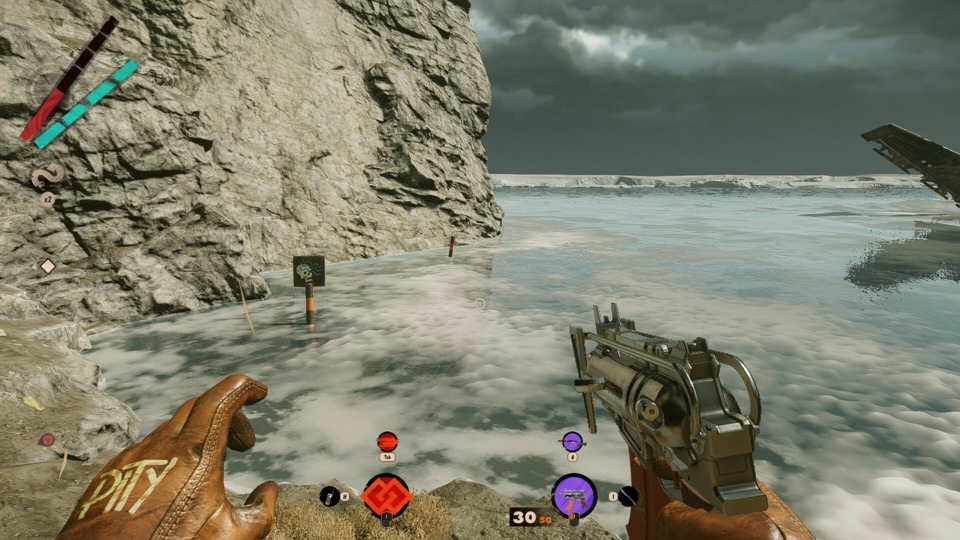
What’s also interesting with the levels is the aesthetic. At face value, this game’s eccentric 60s setting shows with bright colors, wacky outfits, groovy architecture (for the new buildings anyways), and psychedelic art. What’s even better than the look of the game is the sound, as its mix of rock and jazz with both its lyrical and instrumental music captures a vibe that I would best describe as a more action-packed James Bond. As I played more, however, I started to notice more of the island, which was originally a fishing village. The more I played, the more I noticed Dishonored-looking architecture. In other words, Blackreef felt like Dishonored with an almost literal 60s coat of paint over the top of it, and while I think the combination of the two is interesting, I also think this strange connection to Arkane’s previous series doesn’t entirely allow this game to stand on its own.
As for the levels themselves, they highlight just how great Arkane is at creating intricate maps worth exploring. Each area is filled with a ton of options for moving around, and the maps do a great job at accounting for all possible playstyles. Add on top of that the various ways the levels change based on time-of-day, and it’s hard not to admire just how masterfully designed these levels are. Also, each area has some extra little fun places to explore like Charlie Montague’s various challenges or the various little puzzles and easter eggs to solve. Arkane knows how to make great levels, and Deathloop shows that they can even go above and beyond their previous works.
Keeping track of all these things to do and see is where the leads and discoveries come into play. Leads and discoveries are the spiderwebs of clues, pointers, knowledge, and objectives to follow that you pick up along the way. This information doesn’t reset with the loop, and it helps with either learning more about the Visionaries or finding a few new powerful weapons to add to your arsenal. Having these clues point you towards the right direction is neat, and one thing I love about all of this is how it is organized. Whether it be in-between levels or while in the level itself, the game does a good job at displaying everything that can be done within each level at each time of day, and knocking out a few different leads while in the same level is both productive and speaks well to the non-linear storytelling. Also, the game does a good job at inserting cutscenes whenever a large story moment happens to basically comb over what just happened and what Colt plans on doing next, which helped me a lot with keeping track of what’s going on.
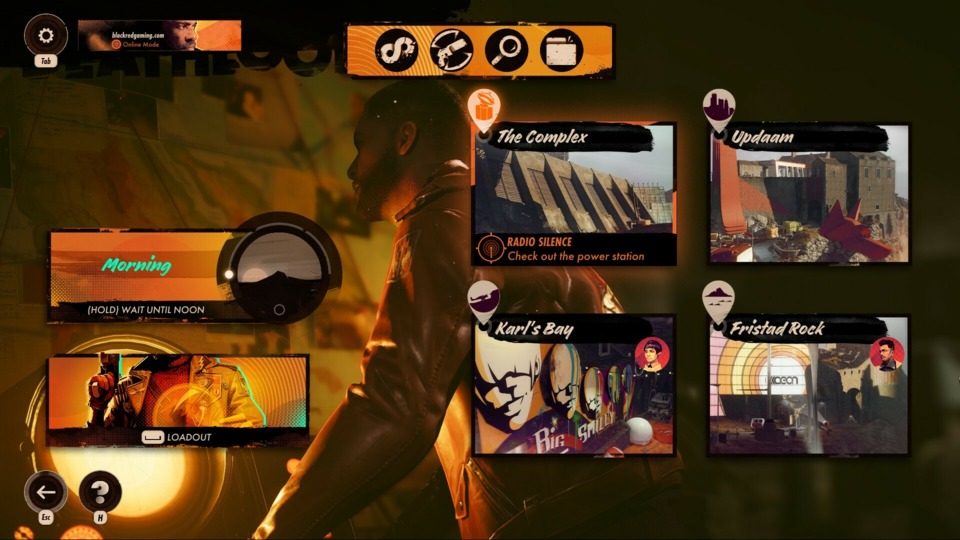
While the leads and discoveries are a great tool similar to the rumor map of Outer Wilds, where this game differs and where my biggest issue lies with this game is how hand-holding it can be. This is a matter of preference more than anything, but I think the game goes a bit too far in telling you what to do and where to go. Normally, following the waypoint and picking up the item of interest would be fine, but considering this is a non-linear investigation game where a lot of the story is told through document pickups, I found that it deters from the storytelling experience and the investigative gameplay. There are some points of obscurity such as giving you the building to go to without telling you exactly where an item of interest is or one target that blends in at a masked party, but these obscure moments are few and far between and for the most part you can just follow a waypoint without really thinking about it. The issue that I have with this is that I found myself somewhat detached from the story and world-building because I never felt any need to interact with it. What’s the point in reading the documents if I could just skim them and let the game tell me I found the right info?
These straightforward leads also detracts from the gameplay by not forcing me to dig through my discoveries and leads to try and figure out my own perfect day of crime. The game does have some welcoming shortcuts here-and-there like door codes that pop up after learning them so you don’t need to memorize them, and I still think the lead and discovery page saying what parts of the spiderweb can be done in each area is great for multi-tasking, but I also think there is a difference between that and just giving out a waypoint to blindly follow. I believe a more obscure leads page that offers the information of all possible leads in a level but with obscure clues and no waypoints would be beneficial to the core investigating of the game. Over time, I was sort of able to get my mind off of the Outer Wilds obscurity mindset and just enjoy following waypoints like I would in any other game, but doing so meant losing something that makes a time loop game special. It’s an investigation game where the game does the investigating for the player, and while its story is still puzzle-like and fun to solve, the waypoints take part of the investigation away, which is what makes a time-looping game unique.
While a time loop may be new for Arkane, what isn’t is their trademark immersive sim gameplay. A lot of the gameplay DNA of their previous works can be seen here, especially in the combat. Whether it be guns blazing, stealth, hacking, powers, or a combination of the group, the level of freedom the systems in this game offers is a blast, and using a combination of powers and hardware to dispatch enemies shows how well these systems work together.
The method of dispatching enemies I ended up interacting with the most was stealth. This game has a lot of basic stealth mechanics you could ask for such as marking enemies, items to distract enemies with, alert indicators, and so on. One interesting thing this game does compared to others is that bodies disappear instantly for narrative reasons, so moving and hiding bodies isn’t available here. At first, I liked not having to deal with bodies as it allowed me to stealth kill at a distance without the worry of others finding their dead comrades, but this does become an issue later on that I’ll touch on in a bit. About halfway through the game, I found a sub-machine pistol with silenced shots as a modifier, and being able to run around and pop heads stealthily felt great. There are a few issues here-and-there like not being able to use the stealth melee animation on sitting enemies, but overall the stealth in the game works well enough.
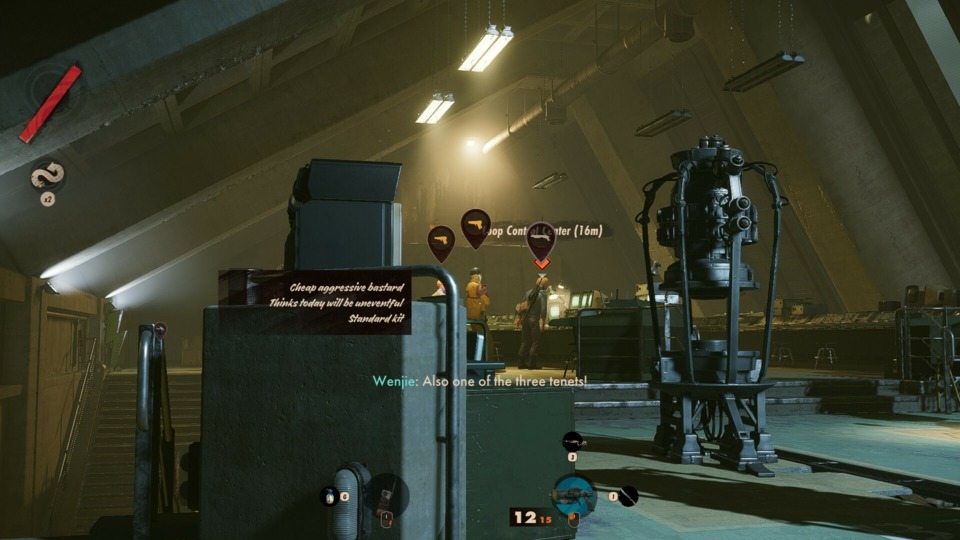
If stealth doesn’t work, there is the other well-trodden path of guns-blazing. Just like stealth, everything works well enough to make action just as viable as any other form of play, but combat also has a few tricks up its sleeve. For starters, the time-to-kill on normal enemies is surprisingly satisfying, and being able to efficiently dispatch enemies felt powerful. Colt can dual-wield some guns, though I found myself trying that once and never touching it again. Different weapons have different levels of rarities with different modifiers on them, and some of the modifiers are fun to play around with. At one point I found a cool rifle that had unlimited ammo until I missed a shot, which I think is super neat. There are also some helpful movement abilities such as leaning, popping over cover, sliding, and double jumping (if it’s equipped). Sprinting into a double jump felt inconsistent, but having these movement abilities overall helped me traverse the game’s intricate levels. One issue I had with the combat is that the game doesn’t do a great job at communicating damage taken, but I was eventually able to get used to it towards the end. Just like the stealth, combat gets the job done, and being able to do both effectively allows for seamless transition between the two.
To complement either a sneaky or guns-blazing approach to enemies are the powers in the game. There are only a few to choose from, but all of them are useful and fun to play around with. The first power given straight-off-the-bat is reprise, which allows Colt to die up-to three times in each level before fully resetting the loop. Some of the other abilities include a short teleport ability (which is similar to Blink in Dishonored), the ability to ragdoll enemies around, an ability that temporarily boosts damage, an ability that temporarily turns Colt invisible, and my personal favorite ability which chains enemies together so that the damage done to one enemy applies to all others in the chain. These abilities are obtained by killing different Visionaries, which paces out the ability unlocks well, and killing Visionaries multiple times drops upgrades to the abilities that alters and improves them. The best part about the abilities is that it uses mana that’s on a recharge rather than mana that needs items to recharge it, which means being able to play around with powers a lot more. Mixing powers with gunplay can prove to be incredibly effective, and taking out a group of enemies with the proper powers can be quite gratifying.
Hacking works more as a support to stealth and combat, but it can also be effective at dealing with enemies. Early on, Colt picks up a hacking device that allows him to hack just about anything that can be hacked. Turrets, electronically-locked doors, alarms, distraction tools, cameras, and more can be hacked. Hacking a turret and having it turn on an enemy or disabling a camera to sneak by it feeds well into combat or stealth while at the same time not being too overpowering. Being able to hack everything right at the start is a lot of fun, but it also speaks to how Deathloop’s immersive sim gameplay is a bit different from others.
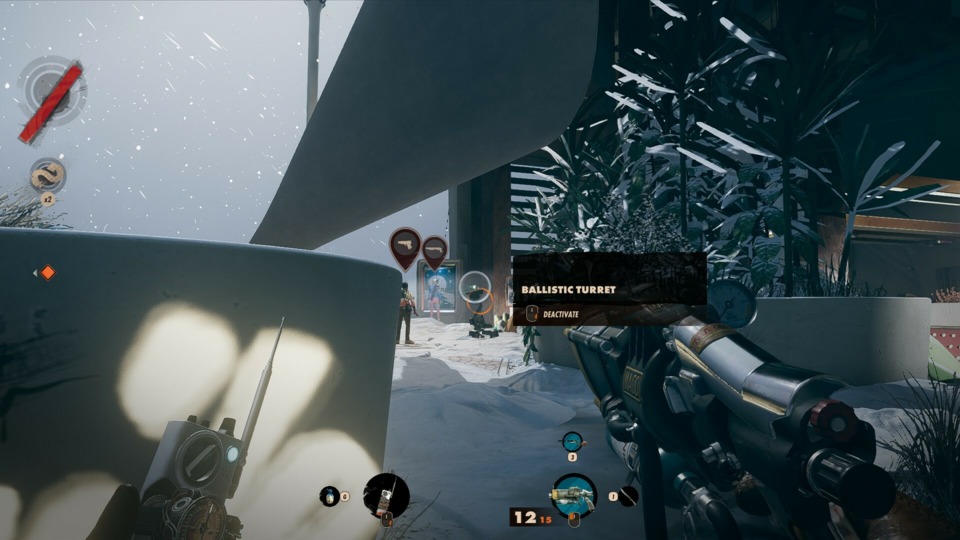
Those who have played Dishonored or Prey will be familiar with a lot of the gameplay systems found here, but what is different this time around are the ways this game streamlines it all. Rather than stick to one particular playstyle, Deathloop is set up so that all playstyles are available and can be fully utilized within a single playthrough. Instead of a skill tree, everything in this game is a pickup to equip, which means choosing a different playstyle is as simple as changing around a loadout or even just creating a build that is effective at overall play. Being able to fully utilize all playstyles is not only more preferable for me than locking myself into one playstyle, but it also allows Colt to be more powerful and fun to play as and it allowed me to focus on story and leads rather than trying to focus on obtaining skill points. Deathloop streamlines the immersive sim experience without trivializing it, and highlighting all playstyles at once means it’s a nice jumping-in point for immersive sim newcomers and a welcoming change for more experienced players.
Speaking of pickups, the inventory in this game isn’t normal compared to other games of similar nature. Since everything is a pickup, skill trees and other traditional forms of leveling aren’t here. As for what’s being picked up and stored, that too has been streamlined a bit. Weapons, trinkets that buff the player and weapons, abilities, and ability upgrades can be picked up and stored. There are other items to interact with in the world such as health items, ammo, and trash for distractions, but all of those things stay within the level. Whenever I think about an immersive sim, I think about Prey and its huge list of items (including a fair amount of junk) to deal with, so stripping the more unnecessary stuff back cleans up the experience. The weapons and trinkets have different scales of rarity with the more rare items offering better and more unique buffs, but outside of a few modifiers I wouldn’t say anything is out of the ordinary buffs you see in other games. The one place where the inventory system falters a bit is with swapping out weapons or abilities in-game, as the stuff you swap out will be left behind in the level rather stashed in your storage (with an exception), but having this inventory system allows for more variety and experimentation with the game’s various powers and weapons.
Since this is a time loop game, the question of what happens to your inventory after each loop does come into play, and the game answers this with Residuum. Residuum is a material picked up in the game through various means that can be spent on items to permanently keep them in your stash. Even if you swap out an infused weapon or ability while in the level, you will find your infused items in your inventory the next day. Being able to build up a permanent inventory helps remove any tedium of having to find new weapons and items again and again. Also, by the time I was reaching the end of the game, I found myself hardly touching my inventory at all because of how much I loved my loadout, which allowed me to just focus on what was at hand for the home stretch. Residuum is a great tool that saves this game from one of the constraints of a time looping story by allowing permanence beyond knowledge.
While the streamlined gameplay and freedom of the inventory is great, where some of it is lost is on enemies. The enemy AI in this game is quite dumb to the point where some of the beauty of the combat systems aren’t fully realized. In stealth, I’ve had many times where I killed one enemy that is standing right next to another, and the other enemy wouldn’t notice. In combat, a lot of them would just funnel right into me, and while I was originally going to say that the only form of difficulty with enemies is through quantity, I often found that even a high quantity didn’t matter with some simple maneuvering. Apparently, the game gets more difficult as more Visionaries are killed, but I never noticed the enemies getting any stronger or smarter. I could see so many unique ways of taking enemies out while I played, but I never really tried any of these things out because I never needed to. Why try to set up an efficient killing machine using distraction tools and hacked turrets when I can just stealth-headshot enemies and move on? I even started wishing that bodies didn’t disappear just to add some extra challenge to the stealth. On top of all this, enemies are finite within each level, which means spending a few minutes of killing enemies is usually followed by just running around an empty level completing tasks. There’s a lot of fun to be had within the combat systems, but some of it comes off as rather unnecessary given the lack of challenge from enemies.
The common enemies aren’t the only enemies in the game, however. There are also the Visionaries, though they are essentially just slightly-upgraded common enemies. The more notable enemy and one of the more interesting mechanics in this game is Julianna. In Deathloop, Julianna will attack at random times, and when she does she activates a radio antenna that blocks the exits. The radio must be hacked to be able to leave, but whether or not there is an confrontation between the two is up to circumstance. Where the Julianna attacks are interesting is that Julianna can be controlled by a human. You do have the choice between whether or not you want Julianna as a human opponent, but I played the entire game fighting a human-controlled Julianna, and I had an absolute blast with it. Seeing that I was being invaded pop up on the screen usually meant dropping my plans and fighting one-on-one with Julianna while avoiding other enemies. The fights are super fun, don’t feel out of place, and for me at least were spaced out enough so that they didn’t get annoying. The one issue I had with these fights was that I couldn’t pause the game even if she wasn’t there, but overall I think these Julianna fights are a great and creative addition to the game.
Of course, on the flip side of things is playing as Julianna and attacking Colt. Since there isn’t really any replay value with this game (not a flaw of the game, it is just the nature of a time loop game), playing as Julianna and achievement hunting is pretty much the only thing left by the time the credits roll. There are a few notable differences as Julianna. For starters, while this wasn’t too surprising to me considering how often I won fights as Colt, Julianna is very hard to play as. She doesn’t have reprise (instead having an ability that can disguise her as a common enemy, which is pretty much useless), and she doesn’t have a lot of health, so I found myself dying quite a bit as her. It’s interesting to think about playing as a character who is meant to lose fights, and having that mindset made the few victories I did achieve even more rewarding. What’s also interesting is just seeing the game from a different perspective, as playing as her means not having any objectives (other than stopping Colt) and other enemies being friendly. Speaking of enemies, the enemies in the game will alert Julianna of Colt’s whereabouts if spotted, and Julianna can likewise call out to enemies to attack him.
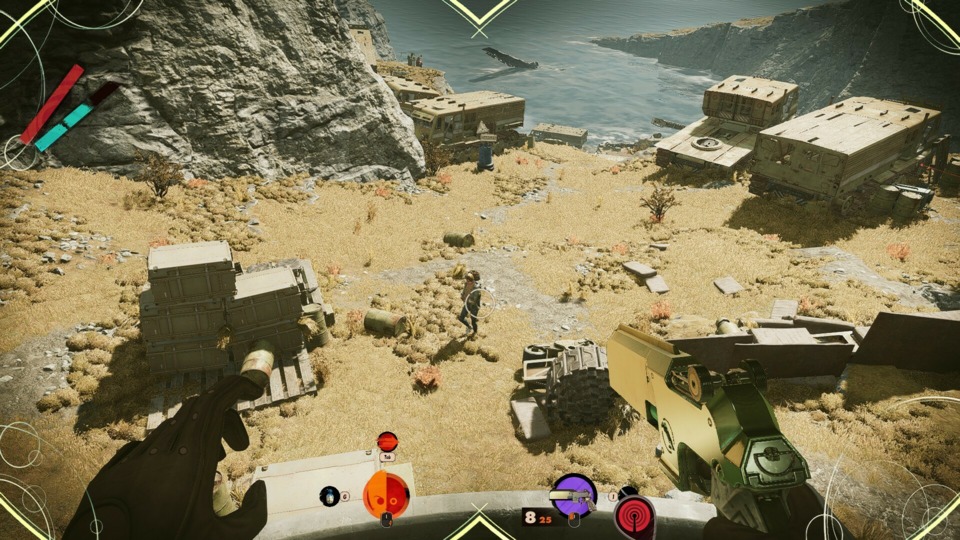
While playing as her and seeing that different perspective is interesting, it does have its fair share of flaws. For starters, I found the game to be glitchier and have poorer performance while playing as her, which made it hard to properly fight Colt. Instead of picking up items in the game, Julianna builds up her inventory through a multiplayer leveling system, which would be fine if it weren’t for the fact that her level one items aren’t great, and trying to build up a decent inventory is a slow chug that could turn people off right away. Matchmaking for the game is pretty bad, as queue times were long for me and I didn’t even enter the match half of the time. Unfortunately, I only see this problem getting worse as the fervor around this game dies down to the point where it could be borderline impossible to get into a match. Either way, it didn’t take long before the novelty of playing as her to wear off, and while I appreciated staying in the game for a few hours longer, I don’t really see anybody sticking around with this mode long after their time with the main game is complete. If you are reading this and it’s too late to get into a match, just know that you are missing out more on playing as Colt fighting Julianna rather than playing as Julianna fighting Colt.
In the end, Deathloop is a highlight of 2021 releases and a great time loop adventure with solid combat abilities, a gripping story with fun characters, and smart systems that bypass some of the restrictions of its narrative form. There are some issues with the game in regards to the ending, enemies, and how hand-holding the game can be, but I think the game’s competent blend of inspirations can make some of those points easy to forget. I think this game is high up on the list of great time loop stories, and I would recommend this to anyone looking for a fun singleplayer game or an introduction to immersive sims.
